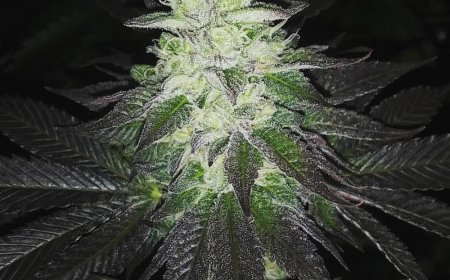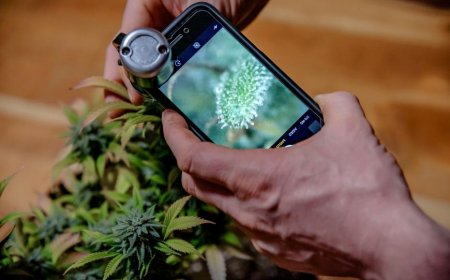How to Grow Lion's Mane
Take a look at our comprehensive guide on how to grow Lion's Mane mushrooms at home. Ideal for novice growers interested in successful mushroom cultivation.
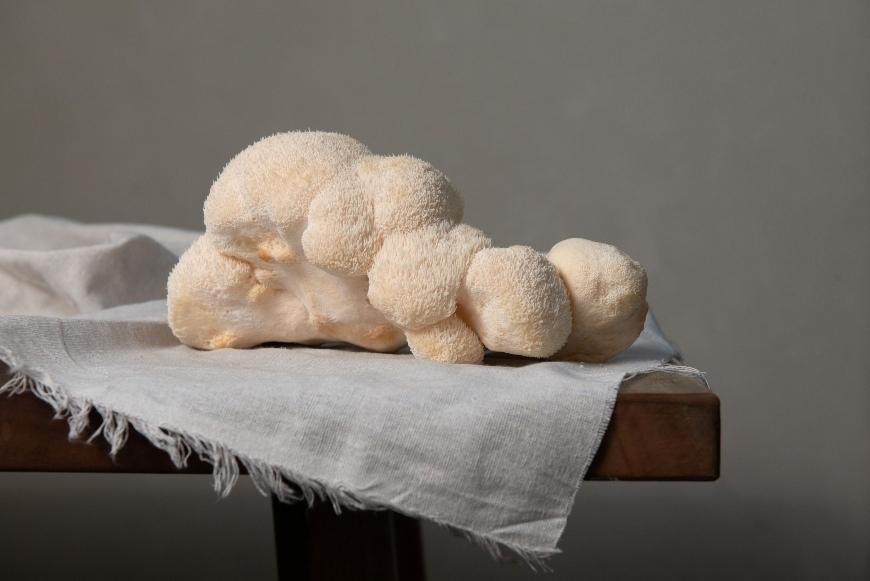
Learning how to grow Lion's Mane is an enriching journey into the world of mushroom cultivation. This unique species, renowned for its culinary and medicinal properties, offers a rewarding challenge for novice growers and seasoned mycologists alike.
In this comprehensive guide, we'll delve deep into the process of growing Lion’s Mane mushrooms from scratch. From selecting the ideal substrate - often hardwood pellets or logs from specific hardwood trees - to setting up your fruiting chamber and maintaining optimal conditions for growth.
We'll also discuss inoculating with lion's mane spawn, nurturing your mycelium through its various stages until it fruits, harvesting fresh lion’s mane mushrooms at just the right time, and storing them properly to preserve their quality. Get ready to immerse yourself in successful mushroom cultivation!
Table of Contents:
- Choosing the Right Growing Medium for Your Lions Mane Mushrooms
- Setting Up the Ideal Environment for Growing Lions Mane Mushrooms
- Preparing the Substrate
- Inoculating with Spawn
- Caring for Your Mushrooms
- Harvesting Your Lions Mane Mushrooms
- Storing Your Harvest
- FAQs in Relation to How to Grow Lions Mane
- Conclusion
Choosing the Right Growing Medium for Your Lions Mane Mushrooms
If you're looking to grow Lions Mane mushrooms, the first step is choosing the right growing medium. The type of substrate you choose can greatly impact the growth and yield of your mushrooms.
Hardwood Substrates
Lions Mane mushrooms thrive on hardwood substrates such as oak, beech, maple, walnut, or birch logs. Hardwood species provide optimal nutrition for these fungi due to their lignin and cellulose content, which the mushroom mycelium breaks down during its growth cycle.
- Oak Logs: This is a popular choice because it's durable and decomposes slowly, providing nutrients over a longer period.
- Sawdust Blocks: These are compacted blocks made from mixed hardwood sawdust that has been sterilized.
Alternative Substrates
While hardwoods are the preferred substrate, you can also use straw or coffee grounds. However, these mediums may not produce as high a yield compared to hardwoods.
- Coffee Grounds: An eco-friendly option that recycles waste products but may require additional supplementation with other materials like vermiculite.
Supplements
In addition to selecting your primary substrate material, you may need to consider adding supplements to increase nutritional value. Some growers add wheat bran or soybean meal to their substrate mixtures to promote faster colonization by mycelium and better fruiting results overall.
The ultimate decision relies on the available resources and how much effort is desired to put into prepping before inoculation. Remember, quality inputs often lead to great outputs.
Setting Up the Ideal Environment for Growing Lions Mane Mushrooms
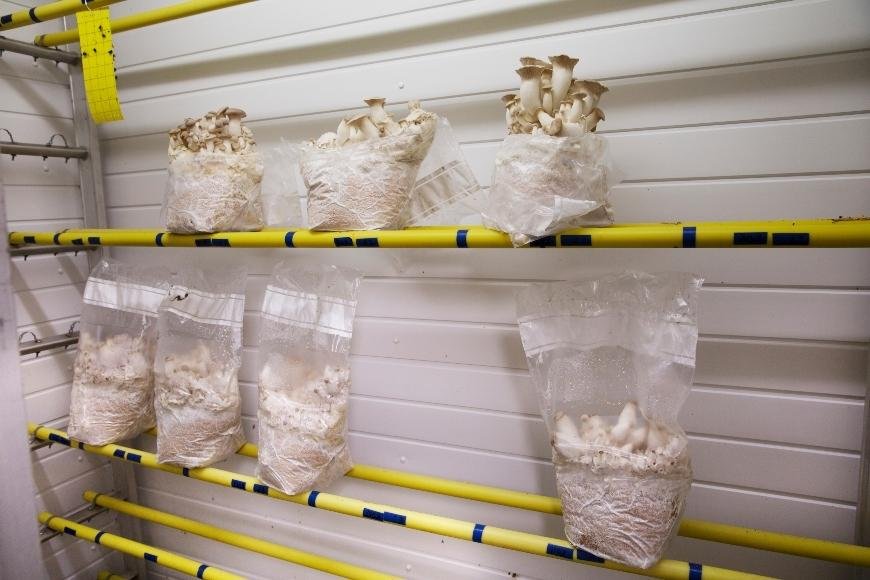
Growing Lions Mane mushrooms at home can be a rewarding experience, but it requires attention to detail. One crucial aspect is setting up an optimal growing environment that mimics their natural habitat.
Temperature
Lions Mane mushrooms thrive in temperatures between 60-75°F (15-24°C). It's essential to maintain this range consistently for successful growth. You might want to invest in a digital thermometer for accurate readings.
Humidity
These fungi require high humidity levels, typically around 85%-95%. A hygrometer can help monitor and control humidity levels within your grow space.
Air Exchange
Stagnant air can lead to mold and bacterial contamination, hindering your mushroom's growth or even killing them off entirely. Therefore, providing adequate ventilation is key; you could do so by opening windows or using fans intermittently throughout the day.
Light Exposure
Indirect sunlight or fluorescent lighting works best for these fungi since intense direct sunlight may dry out your substrate too quickly causing stress on the mycelium network which leads to stunted fruiting bodies or no fruits at all.
In conclusion, creating an ideal growing environment involves balancing several factors: temperature regulation, maintaining high humidity levels with proper ventilation systems installed while ensuring sufficient yet indirect light exposure are some fundamental steps towards cultivating thriving Lions Mane Mushrooms right at home.
For further assistance on cultivating Lions Mane Mushrooms, this guide is an excellent resource.
Preparing the Substrate
Substrate is key to growing Lions Mane mushrooms. It provides the necessary nutrients for their growth and development. For a successful crop, you'll need to find an appropriate material that can sustain the mushroom's mycelium.
Hardwood sawdust is often recommended as it mimics the natural environment of these fungi. You can purchase hardwood sawdust from local lumber yards or online retailers such as Amazon. Alternatively, you could use straw or coffee grounds which are both readily available and inexpensive options.
To prepare your chosen substrate, begin by pasteurizing it to kill any potential contaminants that might compete with your Lions Mane spawn. Heating the substrate to 140-160°F for 1-2 hours is a necessary step in pasteurizing it and eliminating any competing contaminants.
- If using hardwood sawdust or straw: Soak them in hot water for an hour before draining thoroughly.
- If using coffee grounds: Rinse them under cold water until they cool down after brewing.
Once pasteurized and cooled down, mix your substrate with wheat bran at a ratio of approximately 5:1 - this provides additional nutrition for your mushrooms. Make sure everything is well combined before moving on to inoculation.
Pasteurization Methods
You have two main methods when it comes to pasteurizing substrates:
- Hot Water Bath: Immerse your chosen material in boiling water then maintain at around 160°F for one hour.
- Oven Pasteurization: Place dampened materials into oven-safe bags or containers then bake at low heat (around 200°F) over several hours until core temperature reaches desired level.
Regardless of which method you choose, always allow substrates ample time to cool prior to placing any spawn inside. Remember that preparing good quality substrate isn't just about following steps correctly but also ensuring cleanliness throughout the entire process - clean hands and tools can make the difference between successful cultivation and failure.
Inoculating with Spawn
When it comes to growing Lions Mane mushrooms, inoculation is a crucial step. This involves introducing mushroom spawn into a prepared substrate to set the stage for growth and development.
To get started, you'll need high-quality Lions Mane spawn. Grain or sawdust spawns are recommended for beginners due to their ease of use. Break up the spawn into smaller pieces and mix it with your prepared substrate in sterilized containers like jars or bags. Be careful not to introduce any contaminants that could hinder growth.
Seal the containers tightly and place them somewhere warm and dark. It takes about two weeks before you start seeing signs of colonization - white fluffy patches indicating successful inoculation.
- Note: Ensure cleanliness during all stages, especially while handling substrates and spawns, to avoid contamination by other fungi spores present in the air.
- Tips: If there's no sign of colonization after two weeks, consider getting new spawns from another source since old ones might have lost viability over time leading to failure at this crucial stage.
Remember that successful cultivation requires practice and patience. Don't feel discouraged if things don't go perfectly right away. Keep trying until you master each step and eventually harvest those delicious and nutritious Lions Mane mushrooms yourself.
Caring for Your Mushrooms
Cultivating Lions Mane mushrooms is exciting and rewarding, but it requires consistent care for healthy growth. Once you've inoculated your substrate with spawn, the real work begins.
Moisture is Key
These mushrooms thrive in a moist environment, so regular misting is crucial for their development. Use a hand sprayer to lightly mist the surface of your growing medium every day or two - just enough to maintain moisture without making it overly wet.
Fresh Air Exchange
Mushroom mycelium needs fresh air exchange (FAE) for proper growth and fruiting. You can achieve this by fanning your mushroom grow area several times daily or setting up a small fan nearby on low speed.
Temperature Control
Maintaining the right temperature is key when caring for Lions Mane mushrooms. Maintain temperatures between 60-75°F (15-24°C) for optimal Lion's Mane mushroom growth. If possible, try keeping them in an area where they can enjoy these conditions consistently throughout their life cycle.
Monitor Closely
Monitor your Lions Mane closely as they develop. Look out for any signs of contamination such as unusual colors or smells which could indicate bacterial infection or mold growth - both detrimental factors that could jeopardize your harvest if not addressed promptly.
Patience is a Virtue
Remember, patience plays a big part in mushroom cultivation too. After inoculation with spawn, it may take anywhere from 1-3 weeks before you start seeing mycelial growth depending on various factors like strain vigor and environmental conditions among others. Fungi Ally has some great resources on understanding different stages of mushroom development so check them out.
Proper care leads not only to successful cultivation but also maximizes potential benefits derived from consuming these potent fungi. For more information on mushroom cultivation, check out Fungi Ally.
Harvesting Your Lions Mane Mushrooms
Finally, the moment you've been waiting for - it's time to harvest your Lions Mane mushrooms. This step is crucial, and doing it correctly can significantly impact the quality of your yield.
Your Lions Mane mushrooms are ready to be harvested when they reach their full size, typically after about 3-4 weeks of growth. You'll know they're ripe for picking when their spines start to elongate and droop slightly. Don't wait too long though, as overripe mushrooms may lose some of their potency and flavor.
To harvest your mushrooms, gently twist them at the base near where they connect with the substrate. Avoid pulling or yanking on them as this could damage both the mushroom and mycelium network below.
Once you've successfully harvested your Lions Mane mushrooms, give them a quick brush off with a soft cloth or paper towel to remove any remaining substrate particles. Remember not to wash them as water can cause degradation, leading to loss in freshness and potency.
If you find that there are still some smaller fruit bodies left behind after harvesting, don't worry - these will continue growing into mature specimens given enough time.
Potency Considerations When Harvesting
A key factor influencing the potency of Lions Mane mushrooms is the timing of harvest. Younger specimens tend to have higher concentrations of active compounds compared to older ones due to natural degradation processes occurring over time. Therefore, early harvesting may result in increased overall product efficacy. It is essential to remember that individual responses may differ, so it's important to test different options for the best outcome.
Storing Your Harvest
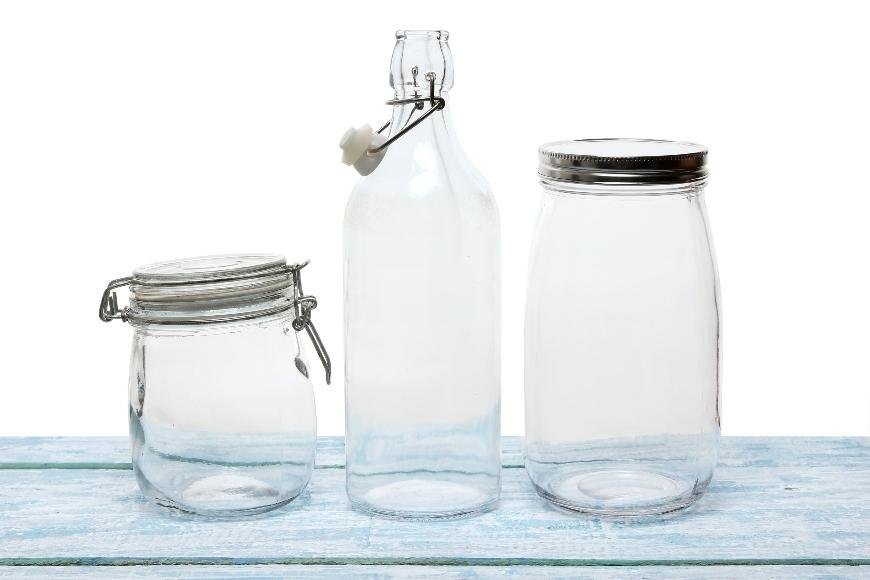
After successfully harvesting your Lions Mane mushrooms, it's crucial to store them properly to maintain their freshness and potency over time. Proper storage not only preserves the taste but also ensures that the beneficial compounds remain intact.
The first step in storing your harvest is to dry the mushrooms thoroughly. You can use a food dehydrator or an oven set at a low temperature. The goal is to remove all moisture from the mushroom to prevent mold growth during storage.
Put your 'shrooms on the dehydrator trays and set to 115°F (46°C) for a few hours till they're totally dried. Spread out the mushrooms on a baking sheet and cook at 150°F (65°C) with the oven door open slightly for air circulation until completely dry.
After drying, store your Lions Mane in an airtight container. Glass jars with rubber seals work best as they don't allow any air exchange, which could lead to degradation of quality over time. Store your dried Lions Mane mushrooms in a cool, dark area such as a pantry or cupboard to avoid direct sunlight.
Additional Tips:
- Vacuum Sealing: For long-term storage up to one year or more, consider vacuum sealing your dried Lions Mane mushrooms before placing them into storage containers.
- Silica Gel Packets: To absorb any residual moisture within sealed containers, add silica gel packets along with dried Lions Mane.
- Cool Storage: Always remember that heat accelerates decomposition, so avoid storing near stoves or ovens.
In addition to preserving freshness and flavor, proper storage also helps retain medicinal properties such as beta-glucans known for boosting immune function and promoting brain health - making every effort worth it.
FAQs in Relation to How to Grow Lions Mane
Want to grow lion's mane mushrooms? Here's what you need to know:
To grow lion's mane mushrooms, use a sterile substrate like hardwood sawdust or straw and maintain proper humidity and temperature levels.
How long does it take for lion's mane mushrooms to grow?
It typically takes 2-4 weeks from inoculation to harvest.
Is growing lion's mane mushrooms easy?
Yes, lion's mane mushrooms are relatively easy to grow, especially for beginners, due to their resilience against contaminants.
How can I speed up the growth of my lion's mane mushrooms?
To promote optimal growth, make sure your mushrooms are exposed to proper lighting, high humidity levels, and temperatures between 65-75°F (18-24°C).
Conclusion
Congratulations, you're on your way to becoming a mushroom-growing pro! Choosing the right growing medium and environment is key to success.
Prepare your substrate and inoculate with spawn to help your mushrooms thrive, and give them proper care during growth for a bountiful harvest.
Storing your harvested mushrooms correctly will keep them fresh for longer, so you can enjoy the delicious and nutritious benefits of Lion's Mane mushrooms that you grew yourself!

